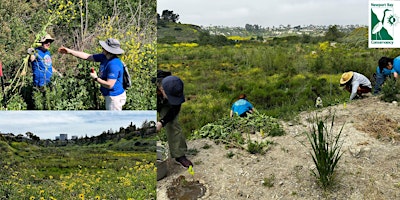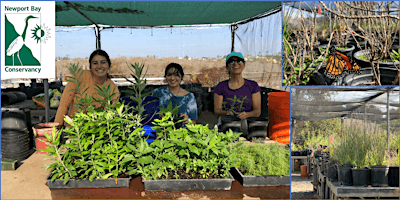Upper Newport Bay
The Upper Newport Bay is a rare treasure in Orange County, California. This magnificent natural estuary consisting of nearly 1,000 acres of wetlands is truly a one-of-a-kind treasure, where freshwater and seawater meet to create a special habitat for fish, birds, and other wildlife.
Also known as the Back Bay, the Upper Newport Bay plays a critical role in Southern California’s ecosystem and economy. Estuary and other coastal wetlands covered over 381,000 acres in California before 1900. Today, California has only ten percent of the wetlands that existed before settlement by Europeans, and only five percent of the state’s coastal wetlands remain intact. The Back Bay is home to nearly 200 species of birds, including several endangered species and numerous other animals and plants. Thousands of migratory birds find shelter and food to help them on their journeys. And tens of thousands of area residents and international tourists participate in recreational activities in or near the Back Bay, including birding, biking, hiking, paddle boarding, and kayaking to name a few.
In 1975, following years of public advocacy (starting with Newport Bay Naturalists & Friends in 1968), much of the Upper Newport Bay was declared an Ecological Reserve under the supervision of the California Department of Fish & Wildlife. Soon after, the County of Orange declared the northwest bluffs a preserve. Today, the Back Bay and surrounding uplands are preserved for all to enjoy. The Newport Bay Conservancy is dedicated to saving this treasure in perpetuity.
History
When the Spanish missionaries arrived in California in the 18th century, estuaries and coastal wetlands were numerous. Gradually these tidal areas have been lost to development – first to commercial ports and then to yacht marinas and waterfront housing. By 1975 less than 10% of the original coastal wetlands remained between Santa Barbara and the Mexican border.
In the 1960s planning proceeded in earnest on a commercial development that would have turned the Upper Bay into a large marina with private docks and waterfront homes. Concerned local citizens, including Frank and Frances Robinson, successfully fought these plans in court. At the same time the Friends of Newport Bay, through their leading-edge nature tours, played a big part in calling the public’s attention to the ecological importance of the Bay and enlisting broad support for the retention and protection of the Bay in its relatively natural state.
As a result of their collective efforts, in 1975 the Upper Bay became an Ecological Reserve, managed by the California Department of Fish and Game. Additional acreage at Big Canyon was added to the Reserve in 1982. In 1990 the County of Orange acquired 140 acres of bluffs on the north and north-west sides of the bay for the creation of what is now known as the Upper Newport Bay Nature Preserve, managed by Orange County Parks. The Ecological Reserve and Nature Preserve together include about 1½ square miles of precious open water, mudflat, saltmarsh, freshwater marsh, riparian and upland habitat.
Wildlife
Upper Newport Bay has an incredible richness and diversity of wildlife that ranges from microscopic plankton floating in its tidal waters to coyotes and bobcats that are seen on the bluffs and elsewhere around the Bay. All native wildlife in the bay plays an important role in our ecosystem, particularly in terms of keeping nature in balance. While generally not considered a threat to humans; some can be powerful and, when cornered, can be dangerous. As with all wildlife, never approach wildlife, even if distressed or injured. Upon encountering one on the trail, give them a wide berth and a way to exit. If injured, take a picture, document location and report to local animal control, wardens or park rangers.
PLANTS. There is a wide variety of plant species, each adapted to the particular habitat in which it grows. There is one endangered species called the Saltmarsh bird’s beak (Cordylanthus maritimus) found in the saltwater marsh. This annual herb is so named because its flower is like a bird’s beak pointed towards the sky. Thanks to urban drool, over half of the flora in the Bay is non-native and many species are highly invasive. NBC spends countless hours and need much support from volunteers conducting restoration. For more information, two plant guides include, Don Millar’s Common Plants of the Upper Newport Bay and Bob De Ruff’s Vascular Plants of the Upper Newport Bay.
BIRDS. The Bay is one of the top birding sites in the country, attracting birders from the US and beyond as over 200 documented species of birds have been sighted, including several rare or endangered species (Ridgway’s rail, California least tern, Belding’s savannah sparrow and Least Bell’s vireo). The Bay is also an important rest stop and/or winter home for many migrating birds, and up to 30,000 of them can be seen here on any one day during the winter months. During the spring and summer many birds that have migrated from the south nest here, together with other birds that are year-round residents. Nesting birds include the endangered Ridgway’s rail and California least tern.
MAMMALS. The Bay is home to 20 mammals including top predators like bobcats, coyotes and racoons to the most numerous being small rodents. For a printable list, click HERE.
AMPHIBIANS & REPTILES. Amphibians (frogs, toads, salamanders and newts) generally require water for reproduction so many of them can be found in the riparian and freshwater marsh areas around the Bay. Reptiles (turtles, lizards and snakes) do not require water for reproduction and development. These can be found mainly in the upland areas of the bay, with turtles in freshwater marsh areas.
INSECTS. Three quarters of all animal species on the planet are insects. The insects associated with Upper Newport Bay live in the surrounding areas rather than the water itself. Freshwater areas do support aquatic insects, some (backswimmers, water boatmen) at all stages of their life cycle and others (damselflies, dragonflies, and skimmers) in the larval stages.
MARINE LIFE. Upper Newport Bay is the largest of only a few remaining natural estuaries in southern California. An estuary is a place where freshwater from inland sources mixes with ocean water. In an estuary, fertile soil washed down from the watershed is deposited, creating mudflat that is soon teeming with worms, clams and other animals. The water is rich in algae and plankton that is easily consumed by the clams and other marine invertebrates hiding in the mud. This abundance of food makes the Bay an important habitat for many fish.
Newport Bay Conservancy
Newport Bay Conservancy, (NBC) has a mission to protect and preserve the Upper Newport Bay through education, restoration, research and advocacy.
We trace our heritage back to 1967 when a group of citizens, including Frank and Frances Robinson, founded the Friends of Newport Bay to call attention to the ecological importance of the Bay and to enlist broad support for the retention and protection of the Bay in its natural state. The Friends was at the forefront of environmental education, conducting monthly nature tours at the Bay starting in late 1968. “Friends Tours” are still given on the second Saturday of each month from October to March.
As a result of the efforts of the Friends, the Robinsons and others, the Upper Newport Bay was protected. The Newport Bay Naturalists was formed in 1990 to organize and conduct restoration, education and other activities on behalf of the landowning agencies.
In 2000 the Friends and the Naturalists merged to become the Newport Bay Naturalists & Friends. Since then we have grown greatly in stature, and in 2010 our membership elected to change the name of the organization to the Newport Bay Conservancy.
Today, the Newport Bay Conservancy is still a volunteer driven organization with a hands-on board and small, dedicated staff. Over 200 trained volunteers lead and assist with programs connecting over 50,000 people to the Bay every year. May volunteers go through additional training to become “Naturalists” to take the lead in many of our programs.
Our Team
We encourage anyone willing to support the Bay. If you, your family, friends, coworkers have a couple hours to give back each year, there are plenty of restoration projects that could use the extra hands.
Many organizations proclaim that their people are their greatest asset. For NBC this is resoundingly true. Our passionate and talented volunteers have contributed well over 120,000 hours of volunteer service at Upper Newport Bay. We are grateful for the enthusiasm and commitment of our roughly 200 trained volunteers.
About every other month we do an orientation/training that examines the general ecology of the Bay and the many ways to get involved. The opportunities are endless; from helping with kayak and outrigger tours, staffing the interpretive center, helping with special events, assisting with restoration projects and leading school groups. Once one day training course is completed, volunteers are eligible to attend a 12-week Naturalist training course starting every September. These Naturalists become leaders in conducting the Bay’s programs.
NBC also provides ongoing training or “Naturalist Nights” for anyone interested in advancing their knowledge on of the Bay and natural history of the area. These are typically the second Tuesday of the month from January through August.









